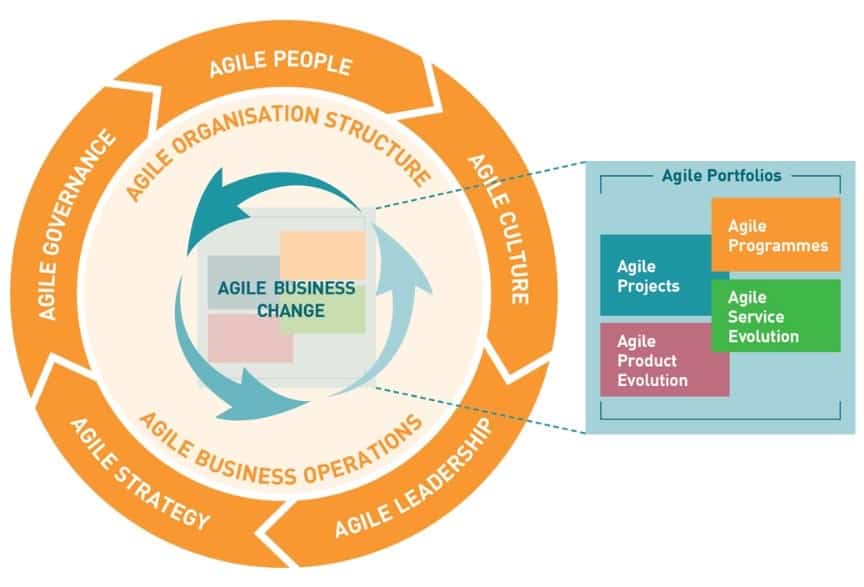
Following a Company’s “North Star” for Job Satisfaction and Success in Challenging Times
Agility is defined as “the ability to shift and adjust one’s style, as needed, to influence, inspire, and motivate others, regardless of one’s title or position or how big one’s office may be” in “Flex: The Art and Science of Leadership in a Changing World,” a new book by Jeffrey Hull.
As we face the COVID-19 pandemic, corporate agility takes on new importance. An agile company sets a shared purpose and vision – its “North Star” – to guide and frame everything the company is and does strategically and tactically from the top down. The ability to set and follow a “North Star” with agility enables a company to adapt to rapidly changing circumstances, the market, new and evolving client needs, and the emergence of new competitors. A report from McKinsey, developed in 2018, outlines five “froms – tos,” which can help us set and follow our “North Star” for business success and co-worker satisfaction. They are:
- From: In an environment of scarcity, we succeed by capturing value from competitors, clients, and suppliers for our shareholders. To: Recognizing the abundance of opportunities and resources available to us, we succeed by co-creating value with and for all of our stakeholders.
- From: Our co-workers need to be directed and managed. Otherwise they won’t know what to do – and they’ll just look out for themselves. There will be chaos. To: When given clear responsibility and authority, our co-workers will be highly engaged, will take care of each other, will figure out ingenious solutions, and will deliver exceptional results.
- From: To deliver the right outcome, the most senior and experienced individuals must define where we’re going, the detailed plans needed to get there, and how to minimize risk along the way. To: We live in a constantly evolving environment and don’t know exactly what the future holds. The optimal way to minimize risk and succeed is to embrace uncertainty and become the quickest and most productive in trying new things.
- From: To achieve desired outcomes, company team leaders need to control and direct work by constantly specifying tasks and steering the work of their co-workers. To: Effective team leaders “responsibilize” company co-workers to take full ownership, confident that they will drive the company towards fulfilling its purpose and vision.
- From: Technology is a supporting capability that delivers specific services, platforms, or tools to the rest of the company, as defined by priorities, resourcing, and budget. To: Technology is seamlessly integrated and core to every aspect of the company as a means to unlock value and enable quick reactions to business and stakeholder needs.
The “North Star” we set and follow through these actions guides us when clients choose what and where to buy, co-workers decide where to work, and partners decide where to engage. Companies like Amazon, Patagonia, and Virgin use this approach to put stakeholder focus at the heart of their “North Star” and, in turn, at the heart of the way they create value and adapt to change. Other agile companies like Deloitte, McKinsey, and Spotify use a similar approach to empower teamwork, innovation, and agility through:
- Clear, flat structures, that reflect and support the way in which the company creates value.
- Clear, accountable roles so that co-workers can interact across the company and focus on getting work done, rather than lose time and energy because of unclear or duplicated roles, or the need to wait for manager approvals.
- Hands-on governance where cross-team performance management and decision rights are pushed to the edge of boundaries.
- Evolving functions to become robust communities of knowledge and practice as professional “homes” for co-workers, with responsibilities for attracting and developing talent, sharing knowledge and experience, and providing stability and continuity over time as co-workers rotate between different operating teams.
- Creating active partnerships and an ecosystem, which extends internal networks and creates meaningful relationships with an extensive external network, so that the company can access the best talent and ideas, generate insights, and co-develop new products, services, and/or solutions.
- Designing and creating open physical and virtual environments, which offer opportunities to foster transparency, communication, collaboration, and serendipitous encounters between teams and units throughout the company.
Scaling agility up shifts the mix of work, so that a business does more innovation relative to routine operations. The business is better able to read changing conditions and priorities, develop adaptive solutions, and avoid the constant crises that so frequently hit traditional hierarchies even in the best of times. So when the unexpected happens, change feels less disruptive and more like adaptive business as usual.
Most importantly, agility and a “North Star” enables a company to deliver measurable improvements in outcomes – not only improved financial results, but also greater co-worker engagement and satisfaction and client loyalty.
- About the Author
- Latest Posts
Vice President Emeritus for Learning Technologies Donald Smith, Ed.D, CPT, headed ME&A programs in learning, leadership, and performance enhancement. He stayed with the firm in his retirement, bringing more than 65 years of experience as a coach, designer, facilitator, evaluator, manager, educator, and organizational change architect in more than 40 countries. He is affectionately known as ME&A’s MENCH.




